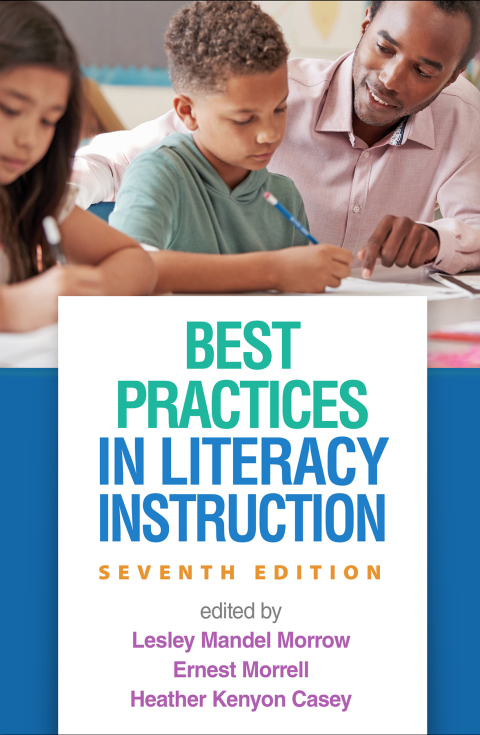Description
Efnisyfirlit
- Cover
- Also from the Editors
- Title Page
- Copyright
- Dedication
- About the Editors
- Contributors
- Foreword
- Introduction: A Historical Look at Literacy Instruction Best Practices from Past to Present
- Contents
- Part I. Situating Best Practices: Comprehensive and Culturally Responsive Literacy Instruction
- Chapter 1: Current Issues and Best Practices in Literacy Instruction
- Chapter 2: Best Practices to Promote Social Justice and Equity in the Literacy Classroom
- Chapter 3: Best Practices for Motivating Students to Read
- Part II. Best Practices throughout the Grades
- Chapter 4: Best Practices in Early Literacy
- Chapter 5: Best Practices for Literacy in the Intermediate and Middle Grades
- Chapter 6: Best Practices for Literacy in High School
- Chapter 7: Best Practices for Integrating Children’s Literature into the Life of the Classroom
- Chapter 8: Best Practices for Organizing and Differentiating for Equitable Literacy Instruction
- Part III. Evidence-Based Practices for Literacy Teaching and Learning
- Chapter 9: Best Practices for Developing Phonological Awareness, Phonics, and Word Study to Support Fluent Reading
- Chapter 10: Best Practices in Fluency Instruction
- Chapter 11: Best Practices in Vocabulary Instruction
- Chapter 12: Best Practices for Developing Comprehension across Genres
- Chapter 13: Best Practices in Teaching Writers
- Chapter 14: Best Practices in Reading Nonfiction: Understanding the Possibilities and Problems
- Chapter 15: Best Practices in Digital Literacy
- Part IV. Best Practices throughout the Grades
- Chapter 16: Best Practices to Support the Literacy Development of Bilingual Learners
- Chapter 17: Best Practices to Change the Trajectory of Students Experiencing Reading Difficulties
- Chapter 18: Best Practices to Support Achieving Yet “Invisible” Literacy Learners
- Chapter 19: Best Practices in Literacy Assessment
- Part V. Sustaining Best Practices: The Importance of Building Connections
- Chapter 20: Best Practices Linking Professional Learning, Literacy Coaching, and Equity
- Chapter 21: Best Practices for Home, School, and Community Partnerships: Collaborating for Social Justice and Equity
- Epilogue: Literacy Practicing: Repositioning Teachers as Cultural Workers and Ecopedagogues toward Creating Learning Cultures
- Afterword: Teaching Literacy in the Dystopia of Now: A Call to Action
- Index
- About Guilford Press
- Discover Related Guilford Books







Reviews
There are no reviews yet.